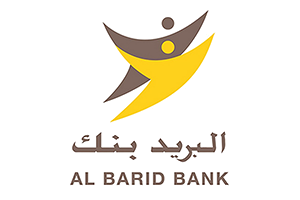Driving Formal Savings: What Works for Low-Income Women?
Scale2Save Campaign
Micro savings, maximum impact.
Insights from MarketShare Associates' customer research in Sub-Saharan Africa
While financial inclusion is expanding globally, the gender gap in access to financial services and products persists. Throughout Sub-Saharan Africa, low-income women remain chronically underserved in their ability to access, use, and benefit from financial products. Although account ownership more than doubled from 23% in 2011 to 55% in 2021, the region lags behind others when it comes to closing the financial inclusion gender gap. According to the 2021 Findex, the gap rose from 5% in 2011 to 12% in 2021. In countries like Cote d’Ivoire and Nigeria, the gender gap is as high as 27% and 20%, respectively.
In an effort to close this gap and to improve women’s meaningful use of financial services, Scale2Save has supported financial service providers (FSPs) to transition toward gender-aware strategies and to build tailored products that create opportunities for women and lower barriers in their lives.
The first step in this process requires a better understanding of the types of savings products and services that women value, prioritize, and need. With this goal in mind, MarketShare Associates conducted customer market research between October 2021 and June 2022 with six of Scale2Save’s partner FSPs in Cote d’Ivoire, Kenya, Morocco, Nigeria, and Uganda. In this post, we highlight the most salient takeaways from this research, which are captured in the recently published learning brief on ‘Driving formal savings: What works for low-income women’.
Women’s savings goals and needs
Women customers’ savings goals can be organized into three distinct categories: household expenses, planned investment, and unexpected emergencies. The research found that over 40% of women primarily set money aside for unexpected emergencies and/or household expenses. Saving for investments in the future was less common among low-income women customers – representing only 26% of those surveyed.
Women’s specific savings goals are influenced by a range of internal and external factors
Women’s economic status is often a determining factor. For instance, women with irregular incomes have a more acute need to save for consumption smoothing, while those with greater financial stability are more likely to save for future investments.
Beyond income, women’s life cycles influence their savings goals. Young women entering the workforce, while a diverse group, have a clear propensity to save for unexpected emergencies. Those in the ‘motherhood’ stage tend to prioritize savings for education and other occasions.
Other external factors also influence women’s savings goals, such as the effects of the COVID-19 pandemic, which reinforced the importance of accumulating sufficient savings to cope with unexpected shocks and stressors.
Lastly, the design of the savings product can considerably influence savings goals. More specifically, commitment or goal-based savings accounts that restrict access until reaching a particular date or balance are more likely to be used for long-term or specific goals.
Product value proposition that drives uptake and use among women
The research identified five important factors that women consider when adopting formal savings products: place, price, people, security of savings, and product features. ‘Place’ – or the ability to access financial services and products easily and conveniently – plays a pivotal role in women’s uptake and use of savings products, as reported by 43% of those surveyed. A further 32% and 27% of the women, respectively, identified ‘price’ (i.e., the cost of using financial products and the monetary benefits derived from using them) and ‘people’ (i.e., customer service) as two important drivers. The ability to securely keep savings in a formal account was also a factor in the uptake and use of products, while product features were identified by fewer women.
Figure showcasing product value proposition that drives uptake and use among women customers

How can we best meet the needs of women? The following key takeaways emerged regarding women’s needs and preferences for savings products:
Increased accessibility and proximity through branchless banking models are critical enablers of women’s use of core banking services, whose access to these services is often hampered by limited mobility and time poverty.
Simplified account opening processes characterized by expediency, convenience, and reduced Know Your Customer (KYC) requirements, as well as interoperability and integration with other payment or banking services are product features that some women greatly appreciate. Albeit important, the relatively small proportion of women who identified product features as a key driver suggests that efforts to communicate and sensitize customers to such features need to be bolstered.
Women customers place greater importance on customer service than men, particularly first-time users of formal financial products. While women appreciate quick and convenient delivery channels, they also value those that enable face-to-face interactions and provide trust, information, and assistance, such as agents.
Cost and affordability are important drivers of assessing savings products, particularly as the cost of using formal financial products often puts banking out of reach for low-income women.
Keeping savings in a formal account provides women customers with peace of mind. Women highly value the security that formal savings accounts offer, reducing incidences of both theft and impulsive spending. Women appreciate savings products that are affordable, accessible, reliable, and safe. However, certain types of women customers value certain aspects of a product’s value proposition more so than others. Women’s needs and preferences for savings products vary based on a range of factors including where they live and work, their level of trust and financial literacy, and their age. While it may not always be possible to design products that meet the specific needs of all women, where possible, customer centricity and smart design can bring substantial benefits to financial service providers and customers alike.
This blog post was originally published on the FinDev Gateway Blog
Scale2Save
13/10/2023
Savings and Retail Banking in Africa 2022 WSBI survey of Financial Inclusion for micro, small and medium-sized enterprises (MSMEs)
The Savings and Retail Banking in Africa report aims to help improve access to financial services for financially
25/09/2023
WSBI as a catalyst for unlocking the potential of female entrepreneurs
13 October 2023, 9.30am-12pm Hôtel Du Golf Rotana Palmeraie, Marrakech I Morocco
18/09/2023
WSBI’s MD Peter Simon opens the G20 side event panel “Gender equity and SME financing in a digital landscape” at the SME Finance Forum in Mumbai
The World Savings Bank Institute (WSBI-ESBG), with the substantial support of its Indian member, the State Bank of India
01/03/2023
The State of Savings and Retail Banking in Africa
The WSBI has conducted two research reports tracking the progress of retail and savings banks in their financial inclusion efforts across Africa (2018, 2019).
22/02/2023
Driving Formal Savings: What Works for Low-Income Women?
While financial inclusion is expanding globally, the gender gap in access to financial services and products persists
19/12/2022
What a journey it has been!
Between 2016 and 2022 Scale2Save financially included more than 1.3 million women, young people and farmers in Kenya, Uganda, Nigeria, Morocco, Senegal and
14/12/2022
The financial diaries revealed useful insights into young people’s savings, spending and income behavior
It examines their experience in respect to financial inclusion, support structures and opportunities for young entrepreneurs
09/12/2022
The Power of Community-Based Organizations to Mobilize Farmers’ Savings
In Ivory Coast, the world’s largest cocoa producer, cocoa is harvested twice a year, in May-June and in October-December. Between seasons, most smallholder farmers do not generate revenue
15/11/2022
How Can Small Scale Savings Be Offered Sustainably?
Learnings from the Scale2Save Program on successful business and institutional models
15/11/2022
Application of CGAP Customer Outcomes Framework in Uganda
This case study by WSBI's Scale2Save programme applied the CGAP customer outcome indicator framework to test the impact of a new basic savings product positioned in the financial inclusion market and…
WSBI-ESBG Managing Director Peter Simon’s Interview with “Corresponsables”
Month: February 2023

Peter Simon
WSBI-ESBG Managing Director
WSBI-ESBG Managing Director Peter Simon gave an interview to the leading Spanish media outlet “Corresponsables” to contribute to their special “Financial Education Dossier” prepared in collaboration CECA banking association, Funcas and WSBI.
Access to financial services in de-populated areas is one of the biggest challenges of our society. The World Savings Banks and Retail Banking Institute (WSBI) is no stranger to this situation and is working on solutions. What can you tell us about this?
The WSBI values are the three ‘R’s – Regional, Retail and Responsible. The first ‘R’, regional, is because WSBI members have a wide network of branches or other solutions which try to bring banking services to as many people as possible in the areas where they live; we call this ‘proximity banking’ and it is very important for us.
Some members have mobile bank branches which drive around their region so that customers do not need to travel far into the local town/city. These mobile branches are staffed and can offer the same service as a static bank branch.
The development of mobile phone apps for banks has also vastly improved in the past decade. These apps allow customers to make changes to their accounts, submit requests for additional services, and message a bank adviser from wherever they are, rather than entering a bank branch. These services were vital during the early days of Covid, when banks were forced to shut their doors but still required to provide lifelines to their customers. In Belgium, banks provided updates on the lockdown rules in place. I know that in Spain, 95 % of the branches of CECA associated members remained open. But still, these apps were very important to avoid contact and limit the spread of the virus.
In many countries, the mobile banking services were developed in lieu of branches or to complement agent banking services, as the local population were able to access mobile phones more readily than visit distant bank branches.
Just last month we had the opportunity to visit the agent banking operations of our Indonesian member, bank BTN. Agent bankers are usually found in convenience stores or petrol stations where locals can go and carry out all the usual banking operations which are provided in traditional bank branches (withdrawals, deposits, paying utility bills, etc.) This visit explained to other WSBI members and representatives from the Joint Office the crucial role that these agents play in developing countries by increasing financial inclusion and offering critical services in areas where opening branches is not economically viable.
So despite that some branches have closed, WSBI members strive to offer the same level of service through different mediums.
Our country (Spain), where we refer to this situation as ‘Emptied Spain’, has many similarities to other countries with regards to this same issue. What good practices are being carried out in the European Union and in Africa?
Losing bank branches is not a new problem, and unfortunately it is one to stay. Bank branches have a lot of overhead costs, and this can make bank products more expensive to cover them. But banks must find alternative solutions to meet customer needs. This is why mobile phone apps, mobile branches, telephone banking and alternative services, such as banking services by post, ATMs or banking buses are vitally important. In addition, it is vital that banks provide a medium to respond to customers swiftly, to respond to their concerns and to meet their needs. WSBI members pride themselves in providing financial education services to their customers and citizens in their regions, to ensure that financial service users understand the products and can use them safely.
But it is not just financial education – it’s also digital skills. It is important that people know how to use a smartphone to access their banking apps. It is also important that people are taught how to recognise risks and threats – scam emails or text messages, pop-ups asking for personal bank details, or urgent calls from someone pretending to be a bank and that, ‘to keep your money safe, please transfer your money to a different account that we will give the details’. If not recognised as a scam, these kinds of calls can be terrifying, and it is very difficult to recover the money.
It seems to me that Spain is very concerned about this issue due to its having an aging population and low population density in the territory. However, if we compare the access to financial services, we can see that it is in very good position. Spain is the third country in the EU-27 with the highest number of banking branches per inhabitant (average in Spain is 1,52 and 1,08 in the EU-27).
In any case, we acknowledge that there will always be vulnerable groups of people who might not cope with the pace of digital transformation in banking. This is why the banking sector is looking for alternative solutions to meet these specific needs. One example is the commitment of the Spanish banking sector that created an observatory of financial inclusion in order to identify the gaps and the needs of the population. The first analysis has shown that 98,6% of the Spanish population has a point of contact with banking services in their place of residence. The problem is that the 1.4% remaining are usually older people, or people in remote areas. In order to improve this data, the whole Spanish banking sector is committed to a route map that will provide a physical point of contact with financial services all of the villages with a population of more than 500.
From an international perspective, we are observing an increase in aging populations, in particular in the global north. The overall literacy rate of Sub-Saharan Africa stood at 66 percent in 2020 with a gender gap of 13% and with some countries ranging as low as 30%-35% literacy rate. In that region of the world many people cannot afford a smart phone and have to rely on more basic digital financial services. In addition, we see a decline in literacy rates, in zones of conflict and (climate) crisis where school education is being interrupted. WSBI members therefore strive to be customer centric and offer services that meet the various financial and non-financial needs of all segments of the population, including the specific needs of the elderly, low-income, women, or young people. Financial and digital education are therefore in many cases complemented by life skills training, crisis management or entrepreneurial skills building.
What projects related to financial education are you aware of and would like to highlight in this interview?
As mentioned before, financial education is important. WSBI members have a long history of providing financial education programmes not only to their own customers but also to the communities in which they serve. I am certain that every single WSBI member is able to show a financial education course, platform or initiative and it is difficult to name just a couple. However, let’s try. Our French and German members have financial education programmes dating back over 70 years, covering everything from fixing a simple household budget, to investing safely in crypto, to understanding what is ‘sustainable’ and how to stay up-to-date with ‘digital’ skills.
Our Norwegian member is working with the Red Cross charity to provide financial education to female prisoners, our Moroccan member has developed a series of 24 TV shows aired on a national TV channel at primetime, to boost conversations about money among families. And in Spain – you have ProFuturo, an initiative launched in 2016 and financed by “la Caixa” Foundation and Telefónica Foundation which has digitized schools in 25 countries from Africa, Latin America, the Caribbean and Asia. To date, 27 million children have benefitted from the educational digital program. who works at national level but also in Latin America to provide financial education to children. Furthermore, at Spanish level, you have FUNCAS Educa, an initiative that was recognised by the CNMV and Bank of Spain by the Finanzas para todos award. Since its creation in 2018, it has provided financial education to more than 12 million people, in more than 4000 activities through an investment of more than 12 million euros.
For the past six years, WSBI has carried out a programme with funding from the Mastercard Foundation; the Scale2Save initiative has had the aim – and success – to promote the viability of low–balance savings accounts and to understand the extent to which savings allow vulnerable people to boost their financial resilience and wellbeing by bringing 1.3 million low-income women, farmers and young people into formal banking in six countries in Africa. WSBI is also embarking on a new regional Silver Finance initiative in partnerships with the IDB Lab to adaptive promote financial services tailored to the needs of the elderly population in Latin America.
How much do you engage to communicating and highlighting the socially responsible developments of the organisations that make up the WSBI?
As a signatory of the United Nations Global Compact since 2006, WSBI-ESBG follows the principles within it. These principles describe fully social and environmental responsibility commitments to follow. Based on this, WSBI-ESBG pays significant consideration to the Sustainable Development Goals, or SDGs. In more recent years, financial services have become an enabler of these goals and are no longer seen as an end-goal in itself. WSBI-ESBG is supporting its network of members in achieving these goals and putting the right metrics in place for demonstrating how members deliver impact. For example, WSBI is a member of the action group for better metrics of savings at the European Microfinance Platform and a collaborator to the Impact Management Platform – an OECD/UNEP-FI initiative that drives collaboration between leading providers of public good standards and guidance for managing sustainability impacts. With our membership, we discuss progress in contributing to socially responsible developments in various working groups and committees, such as the Corporate Social Responsibility and Sustainable Development Committee, and the Sustainable Finance Committee.
Regarding sustainability, it is essential to mention that the African region is still at the onboarding stage. Indeed, most of the African members have yet to implement and adapt their process accordingly. However, sustainability is a topic which features high on their list of priorities in 2022-2023 and WSBI is exploring the best ways to support members in achieving sustainability goals and bring together the region’s experts to exchange best practices.
In addition, we have developed and kept up to date the WSBI-ESBG Charter for Responsible and Sustainable Business. This charter calls on WSBI members to build and maintain a long-term relationship of trust and confidence with those people they serve as customers, provide clear and accurate information on products and services, work against money laundering and terrorist financing, boost accessibility and financial inclusion by serving all segments of society. In the immediate aftermath of the Russian war on Ukraine, members worked hard to provide basic payments accounts to refuges settling in the EU Member States and ensured they had access to financial advice.
WSBI members also recognise that climate change is one of the main collective hazards ever experienced worldwide. As part of their strong commitment to corporate social responsibility (CSR) and sustainable development, WSBI members contribute to the mitigation of climate change by working towards lessening their business’ impact on the environment, providing loans to sustainable projects, and having a strong social commitment to driving local jobs and growth.
To this end, in September last year we organised the first edition of the ESG Financing Summit, a global event where policy-makers and executives in the banking industry discussed best practices and lessons learnt on ESG Financing. The event was co-organised with the Union of Arab Banks and the Asia Association for Financial Cooperation, and included leading figures from the European Commission, China’s Central Bank, and the Governor of the Zambia Central Bank. Over 300 participants attended the meeting, confirming even further how central this topic is for our members.
ESBG responded to the ESMA consultation about the use of ESG terms in funds’ names
On 17 February, ESBG submitted its response to the ESMA consultation about the use of ESG terms in funds’ names. ESBG’s answer is built on the following three key points:
- ESBG underlines the need to establish, first and foremost, a clear and uniform methodology for “sustainable investments”.
- ESBG does not believe that introducing ESMA’s suggested quantitative thresholds to assess funds’ names would be the best solution.
- Instead of introducing the suggested thresholds, ESBG would like to call for a better implementation of the already existing requirements.
ESBG welcomes ESMA’s objective to tackle greenwashing when it comes to funds’ names. As a prerequisite to any action, there must be a clear and scientifically comprehensible uniform legal definition of “sustainability” to be able to present sustainability features in investment products. EU sustainability-related initiatives, such as the Sustainable Finance Disclosure Regulation (SFDR) and the EU Taxonomy Regulation, are already aiming at creating a harmonised cross-border framework for offering sustainable products in the EU. Hence, it is too early to set thresholds until a harmonized methodology for “sustainable investments” is provided.
More specifically, ESBG believes that the proposed threshold of 80% for investments with sustainable and social objectives is too high. There is notably a surprising gap between this threshold and the ones already existing in other EU countries such as Germany or Luxembourg. ESBG is also not in favour of the inclusion of an additional threshold of at least 50% of minimum proportion of sustainable investments for the use of the word “sustainable” in funds’ names for now. This last threshold should be firstly reviewed and tested for its market suitability before being implemented.
Finally, ESBG believes that sustainable finance regulations should rather incentivise asset manager and product manufacturers to increase the taxonomy level of ESG financial instruments since this has not been sufficiently the case so far.
related
European Banking Authority (EBA) on ESG risk management
The European Savings and Retail Banking Group (ESBG) submitted its response to the consultation launched by the European Banking Authority (EBA). ESBG insists on the need for consitency with CSRD and CSDDD, the addressees of this guideline should also
Enhancing Transparency in Bank Disclosures: ESBG delivers comprehensive response to the EBA’s Pillar 3 data hub consultation
On 14 December 2023, the European Banking Authority (EBA) published a discussion paper on the Pillar 3 data hub processes and its possible practical implications.
IASB Exposure Draft (ED) on Financial Instruments with Characteristics of Equity
On 29 November 2023, the International Accounting Standards Board (IASB) proposed amendments in an Exposure Draft to tackle challenges in financial reporting for instruments with both
ESBG’s response to the EFRAG Comment Letter on Financial Instruments with Characteristics of Equity
On 29 November 2023, the International Accounting Standards Board (IASB) proposed amendments in an Exposure Draft to tackle
ESBG advocates for increased clarity and streamlining of supervisory reporting requirements
On 14 March, ESBG submitted its response to the European Banking Authority (EBA) consultation on ITS amending Commission Implementation Regulation (EU) 2021/451 regarding supervisory reporting
WSBI-ESBG advocates for robust implementation of the BCBS Pillar 3 framework for climate-related financial risks
On 14 March, WSBI-ESBG submitted its response to the Basel Committee on Banking Supervision (BCBS) consultation on its Pillar 3 disclosure framework for climate-related financial risks
ESBG stresses the need for consistency and clarity in its Response to the SFDR Review Consultation
ESBG submitted its response to the European Commission’s consultation on the SFDR review, aiming to enhance transparency in sustainability-related disclosures within the financial services sector
ESBG response to the EBA’s consultation on Guidelines on preventing the abuse of funds and certain crypto-assets transfers for ML/TF
The guidelines on the “travel rule” delineate the actions that Payment Service Providers (PSPs), Intermediary PSPs
ESBG responds to the SRB consultation on the future MREL policy
The European Savings and Retail Banking Group (ESBG) submitted its response to the consultation launched by the Single Resolution Board (SRB) in December 2023 on the future of the Minimum Requirement for own funds
ESBG’s response to the Commission’s consultation on the GDPR
The primary EU legislation ensuring the fundamental right to data protection is the General Data Protection Regulation
ESBG Spotlight: European Payments – taking Stock of current developments
In the Spotlight: Dr. Joachim Schmalzl, Executive Member of the Board of DSGV
In 2021, nearly 144 billion cashless transactions were made in the EU at an 8,6% CAGR (2017-2021), showing that payments are extremely important – and for the EU regulators it is important that these payments are safe, secure, efficient and under EU governance.
This is the right moment to take stock of the latest developments and whether the recent European Commission initiatives are assisting the EU payments landscape to flourish. ESBG is happy to put Dr. Schmalzl, Executive Member of the Board of DSGV, in its Spotlight to receive an update on recent developments. He will shed some light on general market trends in payments, customer behaviour, fraud and the digital euro, and he will discuss some recent regulatory initiatives.
Moderated by Diederik Bruggink, ESBG’s Head of the Payments, Digital Finance and Innovation department, this event promises to be a fruitful exchange on some of the recent developments that drive the EU’s payments agenda.
SPEAKER
Dr. Joachim Schmalzl
Executive Member of the Board of DSGV

MODERATOR
Diederik BRUGGINK
Head of Department Innovation and Payments at The European Savings and Retail Banking Group

Get in contact with us for more details about Spotlight, replays of previous editions or possible collaboration: constantin.vicol@wsbi-esbg.org
ESBG responds to EBA consultation on the effective management of money laundering risks when providing access to financial services
In December 2022, the European Banking Authority (EBA) published draft Guidelines on the effective management of money laundering and terrorist financing (ML/TF) risks when providing access to financial services, accompanied by a revision of the non-profit organisation (NPO) provisions in the ML/TF risk factor Guidelines.
This new set of rules shall ensure that customers, especially the most vulnerable ones, are not denied access to financial services without a valid reason.
In response to the respective public consultation, ESBG submitted a position paper to the EBA on 3 February, highlighting some main observations on the definition of ML/TF risk, the situation where a client has been reported for suspicion of ML/TF as well as national jurisdictions that do not provide for accepting alternative identification documents.
Moreover, we stressed that payment and electronic money institutions should be covered by the Guidelines, to avoid loopholes in the system. The Guidelines are expected to be finalised by Q2 2023 and Q4 2023.
Download
RELATED CONTENT
related
European Banking Authority (EBA) on ESG risk management
The European Savings and Retail Banking Group (ESBG) submitted its response to the consultation launched by the European Banking Authority (EBA). ESBG insists on the need for consitency with CSRD and CSDDD, the addressees of this guideline should also
Enhancing Transparency in Bank Disclosures: ESBG delivers comprehensive response to the EBA’s Pillar 3 data hub consultation
On 14 December 2023, the European Banking Authority (EBA) published a discussion paper on the Pillar 3 data hub processes and its possible practical implications.
IASB Exposure Draft (ED) on Financial Instruments with Characteristics of Equity
On 29 November 2023, the International Accounting Standards Board (IASB) proposed amendments in an Exposure Draft to tackle challenges in financial reporting for instruments with both
ESBG’s response to the EFRAG Comment Letter on Financial Instruments with Characteristics of Equity
On 29 November 2023, the International Accounting Standards Board (IASB) proposed amendments in an Exposure Draft to tackle
ESBG advocates for increased clarity and streamlining of supervisory reporting requirements
On 14 March, ESBG submitted its response to the European Banking Authority (EBA) consultation on ITS amending Commission Implementation Regulation (EU) 2021/451 regarding supervisory reporting
WSBI-ESBG advocates for robust implementation of the BCBS Pillar 3 framework for climate-related financial risks
On 14 March, WSBI-ESBG submitted its response to the Basel Committee on Banking Supervision (BCBS) consultation on its Pillar 3 disclosure framework for climate-related financial risks
ESBG stresses the need for consistency and clarity in its Response to the SFDR Review Consultation
ESBG submitted its response to the European Commission’s consultation on the SFDR review, aiming to enhance transparency in sustainability-related disclosures within the financial services sector
ESBG response to the EBA’s consultation on Guidelines on preventing the abuse of funds and certain crypto-assets transfers for ML/TF
The guidelines on the “travel rule” delineate the actions that Payment Service Providers (PSPs), Intermediary PSPs
ESBG responds to the SRB consultation on the future MREL policy
The European Savings and Retail Banking Group (ESBG) submitted its response to the consultation launched by the Single Resolution Board (SRB) in December 2023 on the future of the Minimum Requirement for own funds
ESBG’s response to the Commission’s consultation on the GDPR
The primary EU legislation ensuring the fundamental right to data protection is the General Data Protection Regulation
ESBG addresses EU policy makers via a new position paper on instant payments
On 14 February, ESBG sent its position paper on instant payments to key Members of the European Parliament (MEPs) and staff members of the European Commission DG FISMA in charge of the proposed legislative act.
Published in October 2022 by the European Commission, the proposal for a Regulation as regards instant credit transfers in euro aims to make instant payments in Europe the “new normal”.
ESBG collected some main concerns in a position paper over the last months and discussed parts of it with DG FISMA earlier in February. The paper provides some insight into why the adherence to the rules should be based on the number of reached (consumer) accounts and why instant payments, considering it as a “premium” service, should be charged.
Furthermore, the paper supports the streamlining of sanctions screening and supports the European Commission’s approach to leave the design of the confirmation of payee (CoP) to the market.
Finally, it is suggested to reduce the scope of the requirement to offer instant credit transfers to reasonable online customer channels.
related
Enhancing Transparency in Bank Disclosures: ESBG delivers comprehensive response to the EBA’s Pillar 3 data hub consultation
On 14 December 2023, the European Banking Authority (EBA) published a discussion paper on the Pillar 3 data hub processes and its possible practical implications.
IASB Exposure Draft (ED) on Financial Instruments with Characteristics of Equity
On 29 November 2023, the International Accounting Standards Board (IASB) proposed amendments in an Exposure Draft to tackle challenges in financial reporting for instruments with both
ESBG’s response to the EFRAG Comment Letter on Financial Instruments with Characteristics of Equity
On 29 November 2023, the International Accounting Standards Board (IASB) proposed amendments in an Exposure Draft to tackle
ESBG advocates for increased clarity and streamlining of supervisory reporting requirements
On 14 March, ESBG submitted its response to the European Banking Authority (EBA) consultation on ITS amending Commission Implementation Regulation (EU) 2021/451 regarding supervisory reporting
WSBI-ESBG advocates for robust implementation of the BCBS Pillar 3 framework for climate-related financial risks
On 14 March, WSBI-ESBG submitted its response to the Basel Committee on Banking Supervision (BCBS) consultation on its Pillar 3 disclosure framework for climate-related financial risks
ESBG response to the EBA’s consultation on Guidelines on preventing the abuse of funds and certain crypto-assets transfers for ML/TF
The guidelines on the “travel rule” delineate the actions that Payment Service Providers (PSPs), Intermediary PSPs
ESBG responds to the SRB consultation on the future MREL policy
The European Savings and Retail Banking Group (ESBG) submitted its response to the consultation launched by the Single Resolution Board (SRB) in December 2023 on the future of the Minimum Requirement for own funds
ESBG’s response to the Commission’s consultation on the GDPR
The primary EU legislation ensuring the fundamental right to data protection is the General Data Protection Regulation
Joint statement calling for clear distinction between AI and credit scoring in AI Act
On 11 January 2024, a joint industry statement was issued by ESBG, together with the Association of Consumer Credit Information Suppliers (ACCIS)
ESBG advocates for harmonized reporting as part of the Common Data Dictionary
On 29 November, ESBG responded to the European Commission’s invitation for feedback on the Common Data Dictionary (CDD), a significant
ESBG submitted its response on resolvability testing to the EBA consultation
Month: February 2023
On 14 February, ESBG submitted its response to the consultation launched by the European Banking Authority (EBA) in November on its amended guidelines, which aim to improve resolvability testing and to promote a deeper involvement of the institutions in the resolution planning process.
In this respect, they are requested to assess whether the arrangements in place are still fit for purpose to support the execution of the resolution strategy through a self-assessment and a master playbook for the most complex banks. The resolution authorities (RAs) will be asked to adopt a multi-annual resolvability testing programme for the institutions under their remit.
In its response, ESBG firstly warns against the risk of duplicated and overlapped requirements. The EBA consultation highlights several areas where the objective to be reached remains unclear. All the requirements that are already covered by the supervision authorities should not be duplicated in these guidelines. Given that the published EBA report on self-assessment is not expected to be complementary, proper, harmonized and stable reporting would be appreciated. Moreover, considering that the master playbook does not replace the other existing playbooks, ESBG also recommends maintaining only one set of documents to avoid unnecessary duplications, or overlaps in updating periods.
Secondly, a deeper cooperation needs to be encouraged between the institutions and the RAs. Such cooperation will lead to a better understanding of the resolvability expectations and thus will benefit financial stability. However, ESBG recalls that the institutions do not have full insight into the resolution plan and that the RAs share information on a ‘need-to-know basis’. The guidelines should be enhanced by the requirement for the RAs to present the authority’s assessment to the banks in order to identify areas for improvement and to avoid miscommunication. In addition, before asking banks to set up a master playbook, any guidance from the RAs on a successful resolution process would be welcome.
Finally, these new requirements should be better proportionated and time phased. The EBA Guidelines should not only provide proportionality for compliance but also for the possibility to adjust the scope of the self-assessment report based on individual requirements given by the group resolution authority. Provided that the non-resolution entities requirement is new, the deadline for the submission of their report should be set to 2025. Besides, keeping in mind the considerable effort required, ESBG deems that an every-two-year submission would be justified for both the self-assessment report and the master playbook.
related
European Banking Authority (EBA) on ESG risk management
The European Savings and Retail Banking Group (ESBG) submitted its response to the consultation launched by the European Banking Authority (EBA). ESBG insists on the need for consitency with CSRD and CSDDD, the addressees of this guideline should also
Enhancing Transparency in Bank Disclosures: ESBG delivers comprehensive response to the EBA’s Pillar 3 data hub consultation
On 14 December 2023, the European Banking Authority (EBA) published a discussion paper on the Pillar 3 data hub processes and its possible practical implications.
IASB Exposure Draft (ED) on Financial Instruments with Characteristics of Equity
On 29 November 2023, the International Accounting Standards Board (IASB) proposed amendments in an Exposure Draft to tackle challenges in financial reporting for instruments with both
ESBG’s response to the EFRAG Comment Letter on Financial Instruments with Characteristics of Equity
On 29 November 2023, the International Accounting Standards Board (IASB) proposed amendments in an Exposure Draft to tackle
ESBG advocates for increased clarity and streamlining of supervisory reporting requirements
On 14 March, ESBG submitted its response to the European Banking Authority (EBA) consultation on ITS amending Commission Implementation Regulation (EU) 2021/451 regarding supervisory reporting
WSBI-ESBG advocates for robust implementation of the BCBS Pillar 3 framework for climate-related financial risks
On 14 March, WSBI-ESBG submitted its response to the Basel Committee on Banking Supervision (BCBS) consultation on its Pillar 3 disclosure framework for climate-related financial risks
ESBG stresses the need for consistency and clarity in its Response to the SFDR Review Consultation
ESBG submitted its response to the European Commission’s consultation on the SFDR review, aiming to enhance transparency in sustainability-related disclosures within the financial services sector
ESBG response to the EBA’s consultation on Guidelines on preventing the abuse of funds and certain crypto-assets transfers for ML/TF
The guidelines on the “travel rule” delineate the actions that Payment Service Providers (PSPs), Intermediary PSPs
ESBG responds to the SRB consultation on the future MREL policy
The European Savings and Retail Banking Group (ESBG) submitted its response to the consultation launched by the Single Resolution Board (SRB) in December 2023 on the future of the Minimum Requirement for own funds
ESBG’s response to the Commission’s consultation on the GDPR
The primary EU legislation ensuring the fundamental right to data protection is the General Data Protection Regulation
Interview with ESBG President Dominique Goursolle-Nouhaud: “The Savings Bank model is the model of the future ”

Dominique Goursolle-Nouhaud
President of the European Savings and Retail Banking Group
One year after her election as the President of the European Savings and Retail Banking Group (ESBG), Dominique Goursolle-Nouhaud reflects on the main projects undertaken so far and tells us about the values guiding her mandate.
What is your assessment of this first year as the President of the European Savings and Retail Banking Group?
This first year in office came about in a difficult context, marked by multiple crises at the European and international level. These crises highlighted the need to come together and work collectively. To face this situation, savings banks have demonstrated their effectiveness and resilience. At the end of a year of commitment where the social approach has been decisive, not to say fundamental, I am very satisfied to see that we have been able to form a common front to build an approach based on the general interest and social values that carry me in the exercise of my tenure. In addition to my function within the ESBG, I am also the President of the National Federation of Savings Banks (la Fédération nationale des Caisses d’Epargne). Representing the interests of the French savings banks through its cooperative model of regional insurance banks, being the pioneers in social transitions, and belonging to its member-clients, has been feeding my discussions led with my European counterparts. Focussing on the positive impact of each of our decisions, I am supporting certain values, such as financial inclusion particularly in these difficult times where inequality is spreading. These are the values I have been defending for so many years and which reinforce my action. And I must say that there is still so much to do!
Does representing the savings banks help you defend its values?
Absolutely! When we represent the French Savings Banks, we carry their values and their convictions. We are proud to exemplify a unique model concerned about people, which contributes to the economic and social development of the territories and strives to be at the forefront of major transformations of society. The challenge is to explain our distinction to other countries and regulatory bodies, such as the European Central Bank (ECB), whose interests can sometimes diverge. I strongly believe in fair banking. In my opinion, the savings bank model is the model of the future. We have been coming through many crises by protecting and supporting the most vulnerable. Therefore, when I am around a table with my European counterparts, I need no lessons from anyone because I know that we are the pioneers!
In the performance of your duties, is being a woman a game-changer?
Yes, I have the impression that there is less of a power relationship. My male colleagues take more precautions with me (laughs)! And that creates a certain consensus.
On the other hand, my relatively positive experience as a female executive in a man’s world does not change the fact that in the banking sector, we tend to overvalue masculine leadership traits like charisma, confidence and decisiveness, and we undervalue more feminine traits like empathy, humility and high emotional intelligence. People might have biases towards what they believe are “good” behaviours, which tends to undervalue what women bring to the table. But I would like to remind a quote from Christine Lagarde who said back in 2010 “if Lehman Brothers had been ‘Lehman Sisters’ today’s economic crisis clearly would look quite different.” It was a quip, of course, but it summaries the situation very well and I think it is still applicable today.
Moreover, as a woman, I make it my mission to raise the subject of the “place of woman” in the financial world. I am very proud to have contributed to the organization of the conference “My world, my knowledge, my future: a female approach to financial education”, the first of its kind to highlight the importance of the role of banking institutions in the financial education for women…because without financial independence, there is no freedom.
But of course the prerequisite of financial independence is to have access to education, and also to financial education. I do believe that ensuring all women to have access to quality education is essential in respecting their rights and accelerating the construction of a just and sustainable world which we all need. In this respect, I must say that I am very proud to take the lead of an institution who attaches priority to financial education.
What has been your greatest pride so far?
I think it is to have succeeded, with the members of the ESBG, in finding a common and urgent European solution in the beginning of the Ukrainian crisis. In one weekend, members showed their support by committing to waive transaction fees on bank transfers to Ukraine. It was not an easy task, because this country is not a part of the European Union and it was necessary to carry out all the operations manually. We, the European Savings and Retail Banks, reacted in consultation and made a strong and united commitment.
Apart from this humanitarian initiative, as one of our most prominent endeavours in the past year, ESBG has sharpened its advocacy strategy by defining priorities and key policy dossiers on a bi-annual basis in consultation with members of each ESBG committee. As a result of our renewed advocacy strategy, 67% of ESBG amendments to key files of EU legislation have been retained by the policy makers. As proven, the fact that we are stronger together does not only make our voices heard; it also ensures that our messages are taken into account by the top legislators. Hence, it is our continuous aim to make the voice of retail and savings banks heard both at the European and global level.
What are your future challenges?
I would like to strengthen our cooperation at the European level, particularly with CaixaBank, with whom I believe it is important to share best practices in terms of inclusive innovations. We need to work hand in hand to develop microcredit, so that the poorest households can benefit from appropriate support and financing. I would also like to take up the challenge of restoring the image of the banker and the bank. In order to do this, we need to make an additional effort in communication and cultural adaptation with the general public who are still too often unaware of our model. We must make it known to as many people as possible!
About the Fédération nationale des Caisses d’Epargne
The “National Federation of Savings Banks” is the representative and expression body for 15 Savings banks, regional cooperative banks, 4.4 million members and 2,600 elected representatives. Its main missions are to coordinate and lead the relations between the members and the Savings Bank, represent their common interests, in particular with the public authorities, to support and train members’ elected representatives, to define, coordinate and promote the social and environmental actions of the Savings Banks.
Press Contact from WSBI-ESBG
Nihan Cevirgen
Communications Manager
nihan.cevirgen@wsbi-esbg.org
Press Contact from FNCE
Guénaëlle BEZAULT
Cheffe de projets Editorial & Digital
guenaelle.bezault@fnce.caisse-epargne.fr
related
European Banking Authority (EBA) on ESG risk management
The European Savings and Retail Banking Group (ESBG) submitted its response to the consultation launched by the European Banking Authority (EBA). ESBG insists on the need for consitency with CSRD and CSDDD, the addressees of this guideline should also
Enhancing Transparency in Bank Disclosures: ESBG delivers comprehensive response to the EBA’s Pillar 3 data hub consultation
On 14 December 2023, the European Banking Authority (EBA) published a discussion paper on the Pillar 3 data hub processes and its possible practical implications.
IASB Exposure Draft (ED) on Financial Instruments with Characteristics of Equity
On 29 November 2023, the International Accounting Standards Board (IASB) proposed amendments in an Exposure Draft to tackle challenges in financial reporting for instruments with both
ESBG’s response to the EFRAG Comment Letter on Financial Instruments with Characteristics of Equity
On 29 November 2023, the International Accounting Standards Board (IASB) proposed amendments in an Exposure Draft to tackle
ESBG advocates for increased clarity and streamlining of supervisory reporting requirements
On 14 March, ESBG submitted its response to the European Banking Authority (EBA) consultation on ITS amending Commission Implementation Regulation (EU) 2021/451 regarding supervisory reporting
WSBI-ESBG advocates for robust implementation of the BCBS Pillar 3 framework for climate-related financial risks
On 14 March, WSBI-ESBG submitted its response to the Basel Committee on Banking Supervision (BCBS) consultation on its Pillar 3 disclosure framework for climate-related financial risks
ESBG stresses the need for consistency and clarity in its Response to the SFDR Review Consultation
ESBG submitted its response to the European Commission’s consultation on the SFDR review, aiming to enhance transparency in sustainability-related disclosures within the financial services sector
ESBG response to the EBA’s consultation on Guidelines on preventing the abuse of funds and certain crypto-assets transfers for ML/TF
The guidelines on the “travel rule” delineate the actions that Payment Service Providers (PSPs), Intermediary PSPs
ESBG responds to the SRB consultation on the future MREL policy
The European Savings and Retail Banking Group (ESBG) submitted its response to the consultation launched by the Single Resolution Board (SRB) in December 2023 on the future of the Minimum Requirement for own funds
ESBG’s response to the Commission’s consultation on the GDPR
The primary EU legislation ensuring the fundamental right to data protection is the General Data Protection Regulation
EBIC, chaired by ESBG, addressed policy makers ahead of upcoming trilogue negotiations on AML
The AML package was published by the European Commission in 2021. Besides the establishment of an EU-wide AML authority, the package shall create a coherent legislative framework (‘single rulebook’) to improve the fight against money laundering and terrorist financing.
Notably, a first ever AML Regulation shall ensure a coherent set of rules for the private sector, including banks. One and a half years later, the discussions in the European Parliament are coming to an end and the final text will be discussed in trilogue meetings later this year.
To equip negotiators with background information on the banks’ concerns, the European Banking Industry Committee (EBIC) sent, on 7 February 2023, some main considerations to policy makers. The paper highlights selected priority issues of particular concern shared by the wider European banking sector, such as the exchange of information (both between group members of obliged entities and, in certain cases, private entities that operate within networks) and the measures to be taken regarding politically exposed persons.
The letter signed by the newly elected EBIC President Peter Simon also pointed to the importance of outsourcing possibilities, especially regarding the reporting of suspicious activities or threshold-based declarations to highly specialised service providers and elaborates on major concerns in the context of beneficial ownership.
In addition to other important messages, the EBIC stressed to disagree with reducing the percentage threshold serving as an indication of ownership of a legal entity from 25% to 5%, as suggested by some members of the European Parliament.
Read the full letter
related
Enhancing Transparency in Bank Disclosures: ESBG delivers comprehensive response to the EBA’s Pillar 3 data hub consultation
On 14 December 2023, the European Banking Authority (EBA) published a discussion paper on the Pillar 3 data hub processes and its possible practical implications.
IASB Exposure Draft (ED) on Financial Instruments with Characteristics of Equity
On 29 November 2023, the International Accounting Standards Board (IASB) proposed amendments in an Exposure Draft to tackle challenges in financial reporting for instruments with both
ESBG’s response to the EFRAG Comment Letter on Financial Instruments with Characteristics of Equity
On 29 November 2023, the International Accounting Standards Board (IASB) proposed amendments in an Exposure Draft to tackle
ESBG advocates for increased clarity and streamlining of supervisory reporting requirements
On 14 March, ESBG submitted its response to the European Banking Authority (EBA) consultation on ITS amending Commission Implementation Regulation (EU) 2021/451 regarding supervisory reporting
WSBI-ESBG advocates for robust implementation of the BCBS Pillar 3 framework for climate-related financial risks
On 14 March, WSBI-ESBG submitted its response to the Basel Committee on Banking Supervision (BCBS) consultation on its Pillar 3 disclosure framework for climate-related financial risks
ESBG response to the EBA’s consultation on Guidelines on preventing the abuse of funds and certain crypto-assets transfers for ML/TF
The guidelines on the “travel rule” delineate the actions that Payment Service Providers (PSPs), Intermediary PSPs
ESBG responds to the SRB consultation on the future MREL policy
The European Savings and Retail Banking Group (ESBG) submitted its response to the consultation launched by the Single Resolution Board (SRB) in December 2023 on the future of the Minimum Requirement for own funds
ESBG’s response to the Commission’s consultation on the GDPR
The primary EU legislation ensuring the fundamental right to data protection is the General Data Protection Regulation
Joint statement calling for clear distinction between AI and credit scoring in AI Act
On 11 January 2024, a joint industry statement was issued by ESBG, together with the Association of Consumer Credit Information Suppliers (ACCIS)
ESBG advocates for harmonized reporting as part of the Common Data Dictionary
On 29 November, ESBG responded to the European Commission’s invitation for feedback on the Common Data Dictionary (CDD), a significant
ESBG responds to the Commission consultation on defining violations of Union restrictive measures
Restrictive measures are an essential tool for maintaining international peace and supporting democracy, the rule of law and human rights.
To preserve these values, the EU currently has over 40 sets of restrictive measures in place which are binding on Member States and on any person or entity under their jurisdictions, including banks. While the adoption of Union restrictive measures has intensified over recent decades, national systems still differ significantly in the criminalisation of their violation. Against this background, the European Commission published a proposal for a Directive on the definition of criminal offences and penalties for the violation of Union restrictive measures in December 2022 to support the efficient enforcement of the rules.
In our response to the Commission’s call for feedback on the proposal, ESBG highlighted important points focused on the roles of banks in the sanctions compliance, such as removing the penalization of serious negligent violations. Additionally, a non-punishable voluntary self-disclosure for employees should be introduced to sufficiently protect them when a mistake happens. This shall prevent the criminalisation of human errors in sanction checks. Furthermore, we stressed that criminal liability requires a precise conceptual delineation of rights and obligation of the involved parties, and provided more remarks on the particular provisions.
RELATED CONTENT
related
European Banking Authority (EBA) on ESG risk management
The European Savings and Retail Banking Group (ESBG) submitted its response to the consultation launched by the European Banking Authority (EBA). ESBG insists on the need for consitency with CSRD and CSDDD, the addressees of this guideline should also
Enhancing Transparency in Bank Disclosures: ESBG delivers comprehensive response to the EBA’s Pillar 3 data hub consultation
On 14 December 2023, the European Banking Authority (EBA) published a discussion paper on the Pillar 3 data hub processes and its possible practical implications.
IASB Exposure Draft (ED) on Financial Instruments with Characteristics of Equity
On 29 November 2023, the International Accounting Standards Board (IASB) proposed amendments in an Exposure Draft to tackle challenges in financial reporting for instruments with both
ESBG’s response to the EFRAG Comment Letter on Financial Instruments with Characteristics of Equity
On 29 November 2023, the International Accounting Standards Board (IASB) proposed amendments in an Exposure Draft to tackle
ESBG advocates for increased clarity and streamlining of supervisory reporting requirements
On 14 March, ESBG submitted its response to the European Banking Authority (EBA) consultation on ITS amending Commission Implementation Regulation (EU) 2021/451 regarding supervisory reporting
WSBI-ESBG advocates for robust implementation of the BCBS Pillar 3 framework for climate-related financial risks
On 14 March, WSBI-ESBG submitted its response to the Basel Committee on Banking Supervision (BCBS) consultation on its Pillar 3 disclosure framework for climate-related financial risks
ESBG stresses the need for consistency and clarity in its Response to the SFDR Review Consultation
ESBG submitted its response to the European Commission’s consultation on the SFDR review, aiming to enhance transparency in sustainability-related disclosures within the financial services sector
ESBG response to the EBA’s consultation on Guidelines on preventing the abuse of funds and certain crypto-assets transfers for ML/TF
The guidelines on the “travel rule” delineate the actions that Payment Service Providers (PSPs), Intermediary PSPs
ESBG responds to the SRB consultation on the future MREL policy
The European Savings and Retail Banking Group (ESBG) submitted its response to the consultation launched by the Single Resolution Board (SRB) in December 2023 on the future of the Minimum Requirement for own funds
ESBG’s response to the Commission’s consultation on the GDPR
The primary EU legislation ensuring the fundamental right to data protection is the General Data Protection Regulation




















































